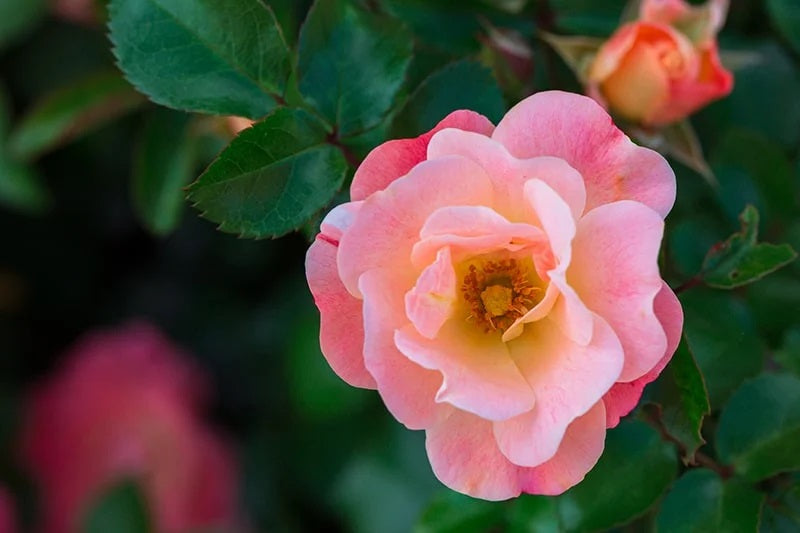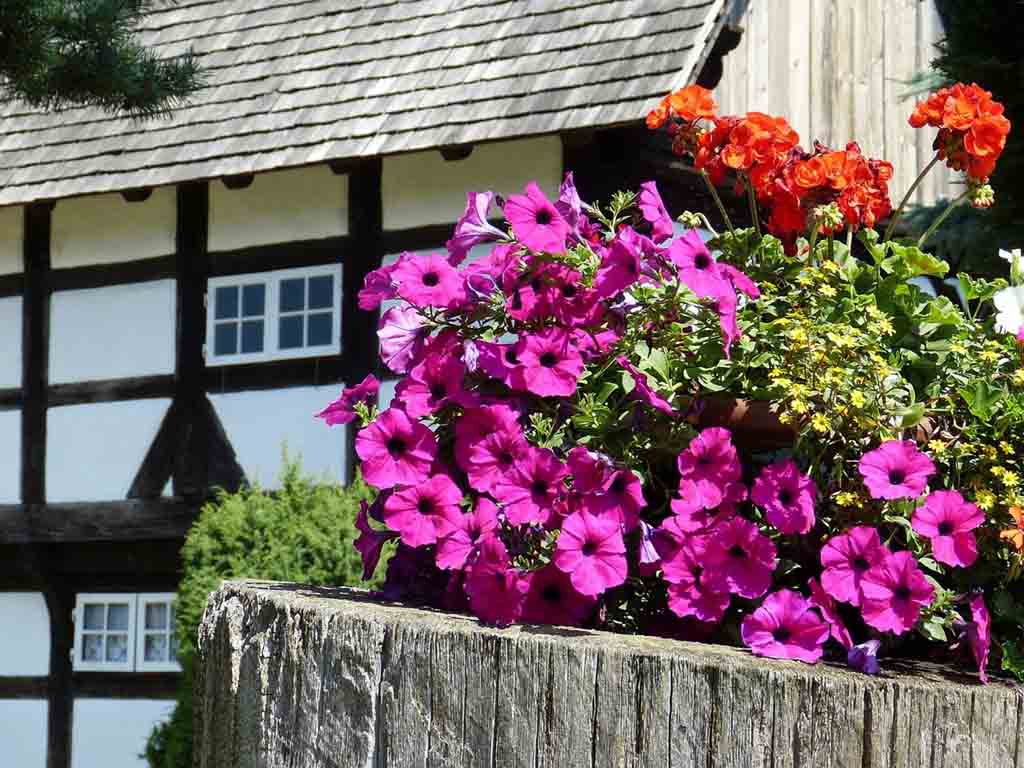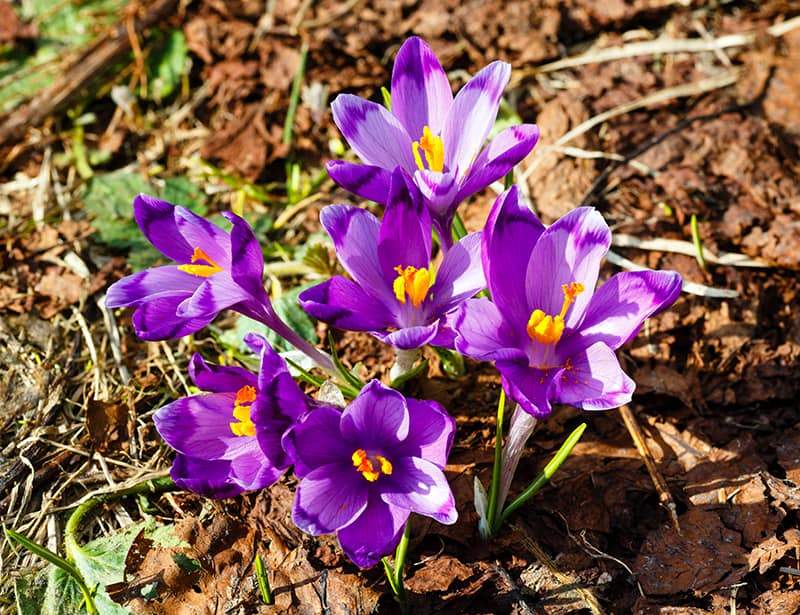Home growers and gardeners tend to be quick to learn one of the most uncom... Read More
- Home >
- Top 15 Most Beautiful Flowers You Can Grow In Your Garden Immediately
Top 15 Most Beautiful Flowers You Can Grow In Your Garden Immediately
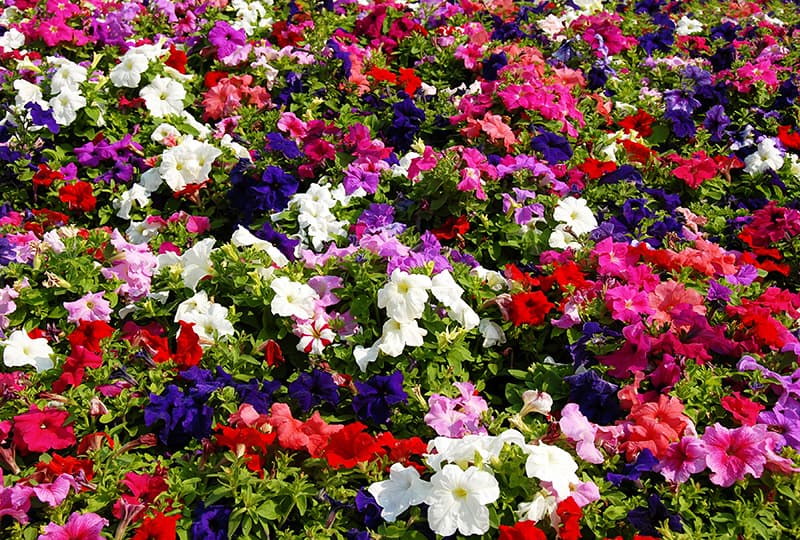
“Flowers are the music of the ground. From earth’s lips spoken without sound.”
This quote from an early 20th-century American poet Edwin Curran transcends the beauty of these flowers into words well.
But I believe that language is still too poor to describe the amazing world of flowers.
Every flower is a little wonder of its own, and it is very difficult to pick the prettiest ones objectively.
Classic florist flowers such as calla lily, gerbera, and orchids are often considered the most beautiful in the world by default. While it is certainly true that they are among the truly most appealing ones, I have tried to go beyond that and explore some not as obvious examples of striking floral beauty that are also garden and wildlife-friendly.
Here are some of the world’s most amazing flowers you can grow in your garden.
1. Foxglove (Digitalis purpurea)
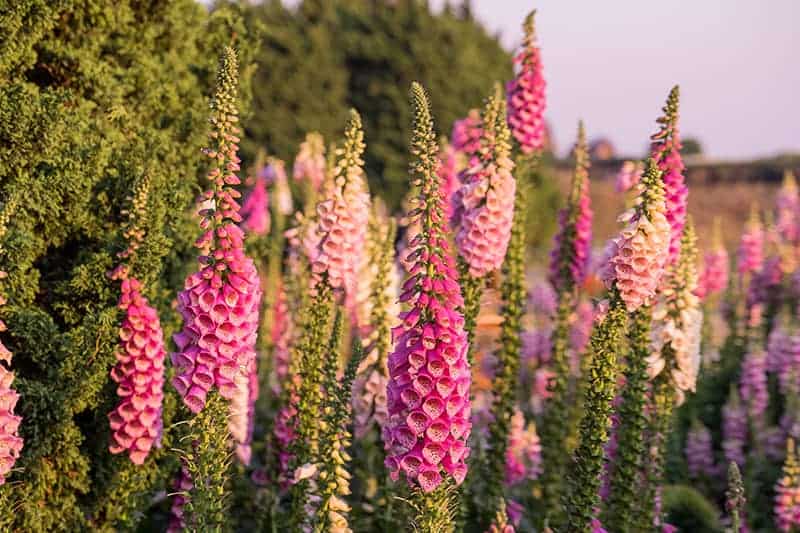
Foxglove or Digitalis is surely one of the most stunning wildflowers in the entire world. Don’t believe me? Just look at the lush clusters of elongated vivid flowers, with a striking dotted pattern on the inner sides of petals.
Foxglove is native to temperate Europe, but it is naturalized in parts of North America and other temperate regions (e.g. temperate regions of Australia), and hardy in zones 4-8.
It’s a biennial plant which flowers in the second year of its life. If you provide it with partial shade and moist soil, it will self-seed and you will always have one flowering generation in your garden
However, beauty is sometimes dangerous. And foxglove’s beauty can be indeed deadly. This plant is very toxic when indigested, so avoid keeping it in the reach of small children and pets.
2. Sunflower (Helianthus annuus)
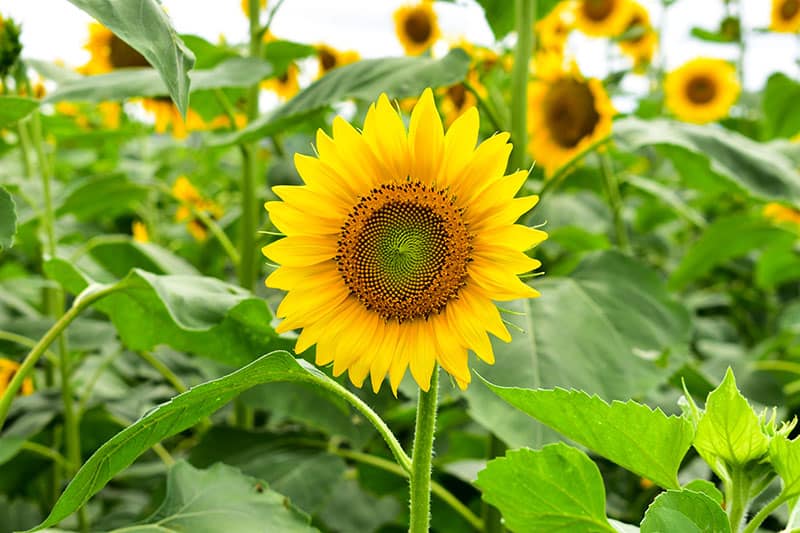
Sunflower (Helianthus annuus) is the epitome of summer beauty. This tall (5-12ft) annual is renowned for its sun-like flower head which always turns toward the sun, following out star on its daily path across the sky. That curious property is called Heliotropism.
Sunflower blooms are also a well-known symbol of symmetry because it is a good natural example of Golden Angle and Fibonacci Numbers.
Sunflower seeds have a high nutritional value for both humans and wildlife. Sunflower seed oil, rich in vitamin E, is highly used in the food and cosmetic industry. And if you want to attract bees and songbirds, sunflowers will certainly draw them into your garden. Bees will enjoy the rich nectar and yellow pollen, and the birds will happily peck at the seeds.
When planting sunflowers make sure you choose an ornamental variety, as agricultural ones are selected for their high yield and are not as decorative. Wild-type sunflowers are also a great choice for the garden.
3. French Hydrangea – Hortensia
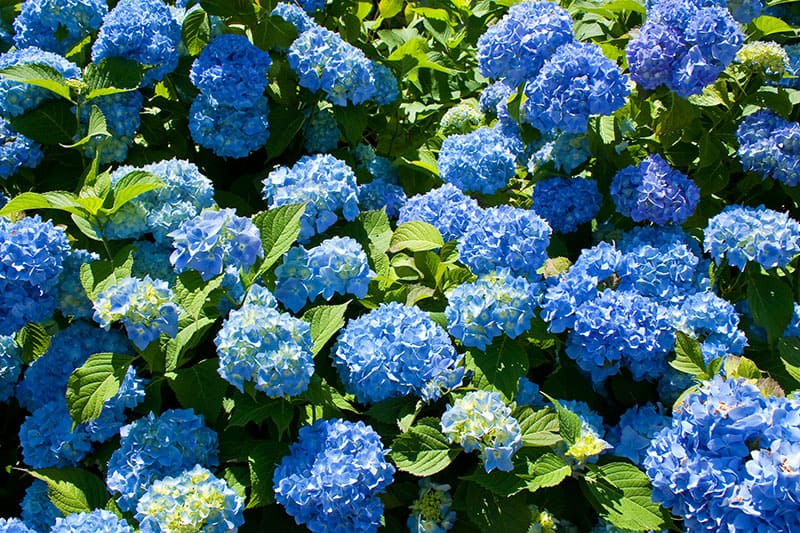
Flower clusters are nice as of themselves. But imagine a flower cluster with blooms in various shades and hues of related colors. Just how wonderful would that be.
In fact, you don’t have to imagine – just look at the French Hydrangea (Hydrangea macrophylla).
Also known as Hortensia or the Florist’s Hydrangea, this plant is actually native to Japan. It has a bushy growth and pale, bright green leaves, which complement the colors of the trademark flowerheads nicely.
The French Hydrangea is one the most beautiful plants you can grow in darker areas. Hydrangea thrives in the shade, so it is perfect for brightening up northern gardens. It prefers loamy, moist, but well-draining soils.
It needs to be protected from the damaging and drying winds, so a sheltered position works best for this plant.
There are several other popular types of hydrangeas worth exploring.
4. Buttercup (Ranunculus sp.)
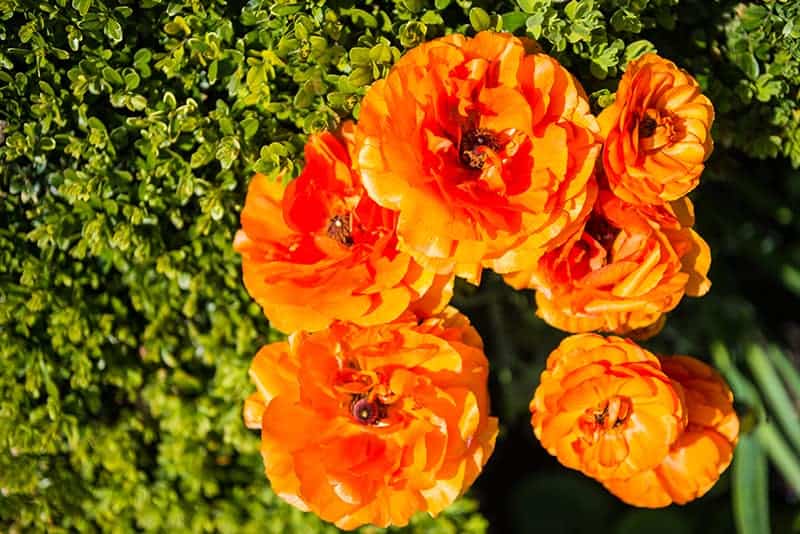
Although there are over 500 species in the family Ranunculaceae, the single best-known ornamental buttercup is the Persian Buttercup (Ranunculus asiaticus). The blooms are lush, rose-like and come in a variety of colors, both vivid and pastel. Other traits depend on specific cultivars.
However, the beauty of the genus doesn’t end with the Persian ranunculus. While not the most obvious most beautiful flower, the Meadow Buttercup (Ranunculus acris) has some amazing aesthetic qualities – it’s petals come in beautiful solid yellow, and have an exquisitely glossy look and feel. The gloss actually comes from the structure of the flower unique in the plant world – the air pockets in the flower petals.
The size of the flowers don’t make it a very attractive stand-alone garden plant, but it can be wonderfully used in combination with other plants, especially when planted in large groups.
5. Lantana

Lantana is special for its multi-colored flower cluster. The small flowers can be red, orange and yellow, or white, pink, blue and/or purple. They can also be combined in other ways (e.g., pink-purple-yellow).
Lantana is a resilient, bushy plant that thrives in any soil. Depending on the climate, it can be annual or perineal. Its height will depend on the variety and on growing conditions, so lantanas can serve as a centerpiece shrub, border shrub, or as ground cover.
As if its flower heads weren’t beautiful enough on their own, lantana is a famous butterfly attractant, adding extra beauty to your garden.
6. Carnation (Dianthus)
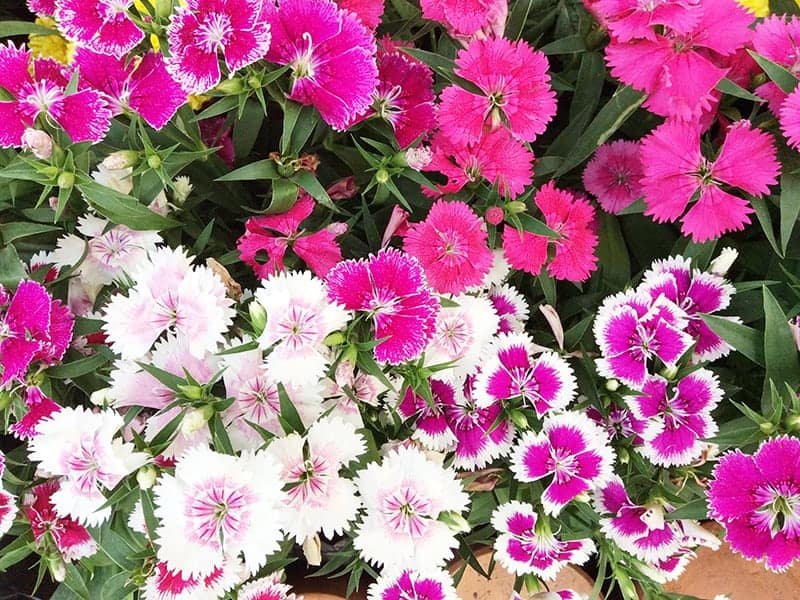
In a weird 80’s Yugoslav comedy-horror film Strangler vs. Strangler, the main protagonist – a flower street vendor with a homicidal streak – repeatedly states: “The one who doesn’t love carnations should not live!”
Perhaps that was a bit too far-fetched, but really, what’s there not to love about carnations?
Their irregularly shaped petals are amazingly soft to touch and come in vivid and pastel colors (there are variegated cultivars too), and the fragrance of the flowers is heavenly sweet. The fact that they come on a long straight stalk has only helped to make them a cut flower classic. It’s no wonder that their family name, Dianthus, means “flower of the gods.” in Greek.
When planting seeds or young plants outside, make sure that the area gets 4-5 hours of sunlight per day, has good air circulation and well-draining, mulch free-soil.
7. Snapdragons (Antirrhinum)
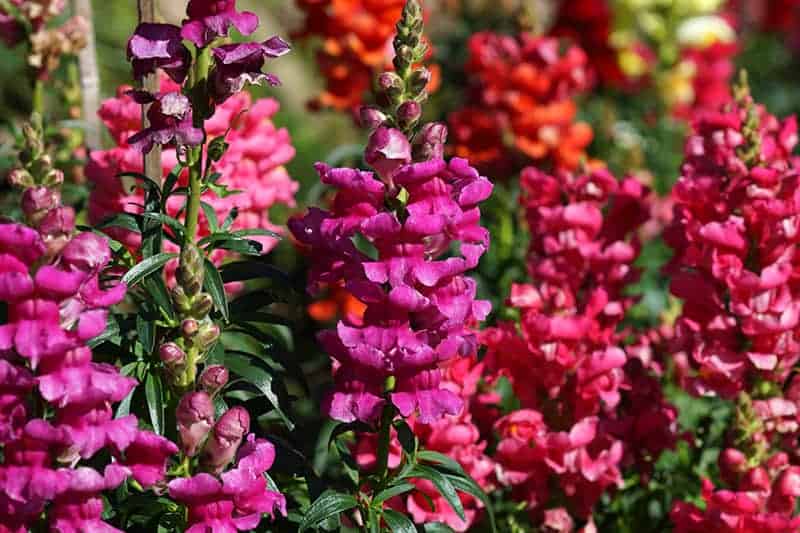
Snapdragons or Dragon flower’s name describes the look of its flower because it seems to have a mouth. And a wide one! When you squeeze it laterally, the “mouth” will open, revealing the white interior and a thick lower yellow “lip.” Also, a discrete snap sound might be heard when you open and close it.
Snapdragons can be found in rocky areas of Europe and North America. However, the most common cultivated species, Antirrhinum majus, which has been in horticulture since the 15th century, is native to the Mediterranean area.
The blooms are stacked in an upward-pointing inflorescence and may be red, pink, orange, yellow, or white. The plant as a whole is tall and harmoniously built
The strangeness of snapdragons does not end at its flowers. When turned upside-down Its seed pod looks like a small skull. Because of that, the seed pods have been a source of various legends in Europe.
As for pollinators, only bumblebees are strong enough to open the flower, but snapdragons are really attractive for them.
8. Bearded Iris ( Iris x germanica)
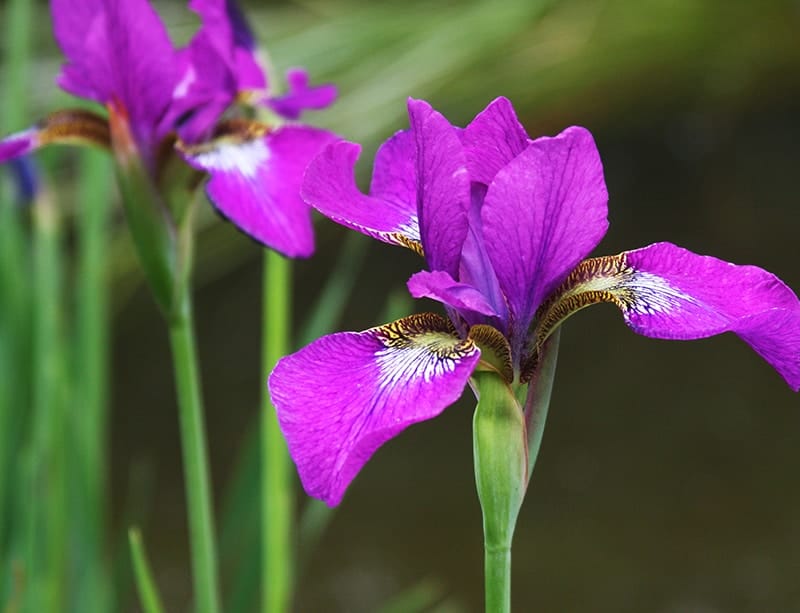
Bearded iris (Iris x germanica) is one of the hardiest flowering bulbous perennials. Originally a wild plant of European forests, once established, this hybrid iris will mostly take care of itself. It re-will grow again from its bulb every year without any intervention. It is good to divide them every few years to keep the growth strong and vigorous.
There are hundreds of cultivars available, with the colors ranging from black-purple to sparkly white. The name Iris actually comes from a Greek word for “Rainbow”, which reflects the range of colors in the world of irises.
9. Bird Of Paradise (Strelitzia)
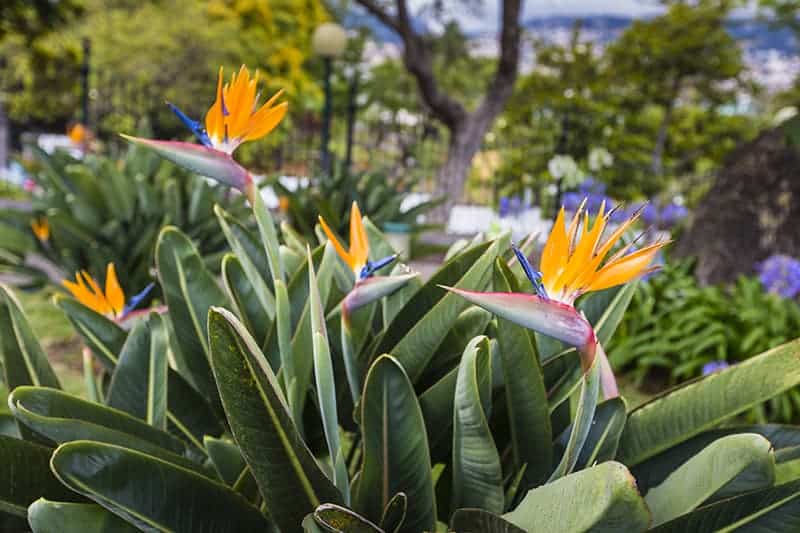
Bird of Paradise is an exotic flower whose shape is reminiscent of a multi-colored bird – namely a bird of paradise species. Like many strange and beautiful endemic plants, Strelitzia is a South-African native. Out of five species belonging to the genus, Strelitzia nicolai and Strelitzia reginae are commonly grown as houseplants.
This is the only plant on this list that is not tolerant of temperate region’s garden conditions. As a tropical plant, S. reginae doesn’t tolerate temperatures below 50°F (10°C).
Like many tropical plants, it does best behind glass, in a sunny position in a glasshouse or a conservatory. It can be put outside during the summer months.
Otherwise, the plant is relatively low-maintenance, tolerant of soil conditions and needing only moderate to little watering once established. If the plant is properly fed with slow-releasing fertilizer and/or compost, it can flower several times per year, with flowering peaking in winter and early spring.
10. Stargazer Lily (Lilium orientalis ‘Stargazer’)
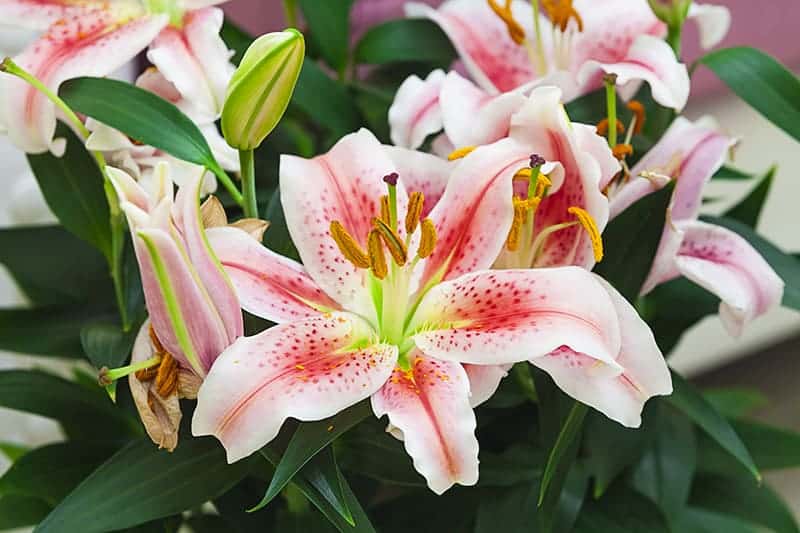
All lilies are an epitome of flower beauty. However, among so many cultivars one stands out especially. Stargazer lily is a cross between Lilium auratum and Lilium speciosum, which makes it an oriental lily hybrid. It was developed 45 years ago with an intention to create a lily that would have an upward-facing flower.
That’s how the lily got its name, but that feature is not the only thing special about this flower.
The shades of pink, the speckles, the sheer volume of the bloom make it one of the most beautiful flowers in the world and a favorite cut flower.
This bulbous perennial is relatively easy to care for in the garden. Unlike many lilies, they don’t even need stalking, despite their tall stature (4 feet). The height them perfect for planting in middle or back rows.
11. Iceland poppy (Papaver nudicaule)
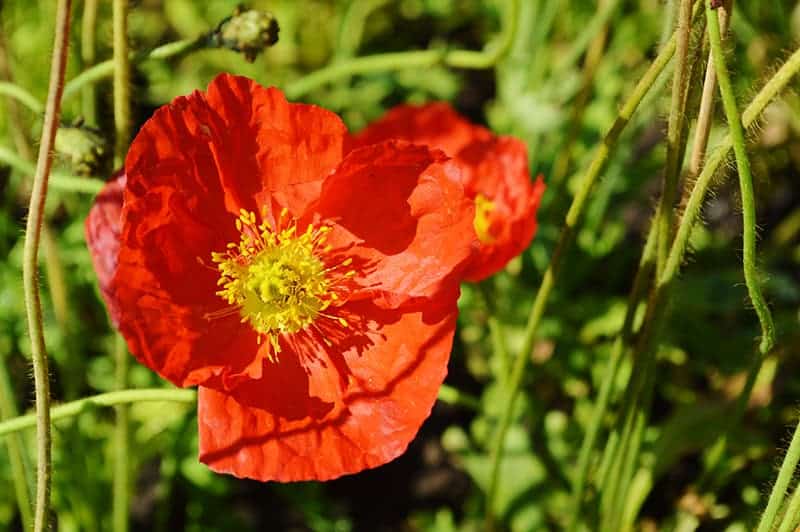
I was completely smitten when I first saw an orange Iceland poppy in a garden. With its almost semi-transparent petals and airy look, Iceland poppy looks even more delicate than other poppies. Despite that, it is larger than it’s cousins.
The flowers are also surprisingly long-lasting (at least for a poppy). Add the fact that they come in all the warm colors, and it becomes clear that Iceland poppy is a perfect spring bloom.
Iceland poppies are particular about planting. They don’t like to be transplanted, so you should plant the seeds in the autumn in the already-designated part of the garden. Also, the seeds need sunlight to germinate, so you should leave them only lightly covered or even completely uncovered.
If you are a fan of poppies, another beautiful species is the blue Himalayan poppy, Meconopsis betonicifolia, although be warned that it is much more demanding than other poppies.
12. Moss rose – Purslane (Portulaca grandiflora)
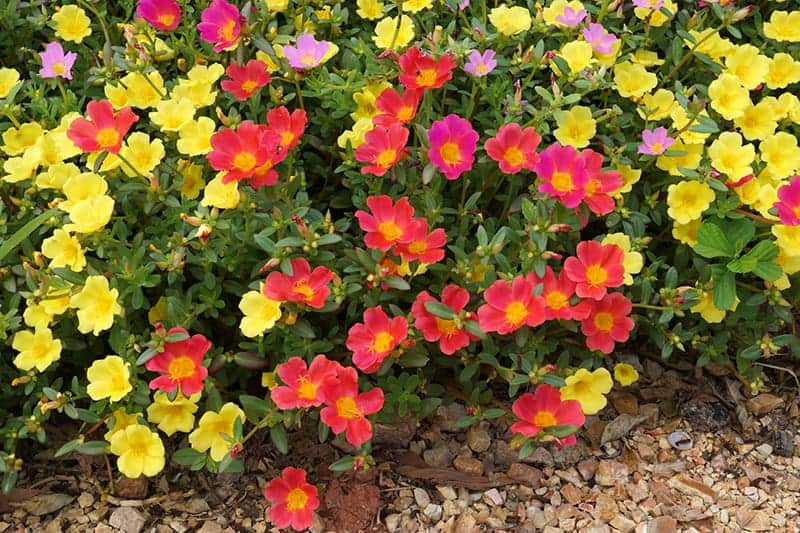
Succulents don’t only have amazingly decorative vegetative parts. They often have beautiful flowers too.
Moss roses or purslanes are low-growing annuals with thick pointed leaves and rose-like, soft, vivid flowers. They love sunny and rocky spots and do better in warmer climates, although they can thrive in various hardiness zones, 2 to 11. They can be grown as ground cover.
13. Bicolor Rose
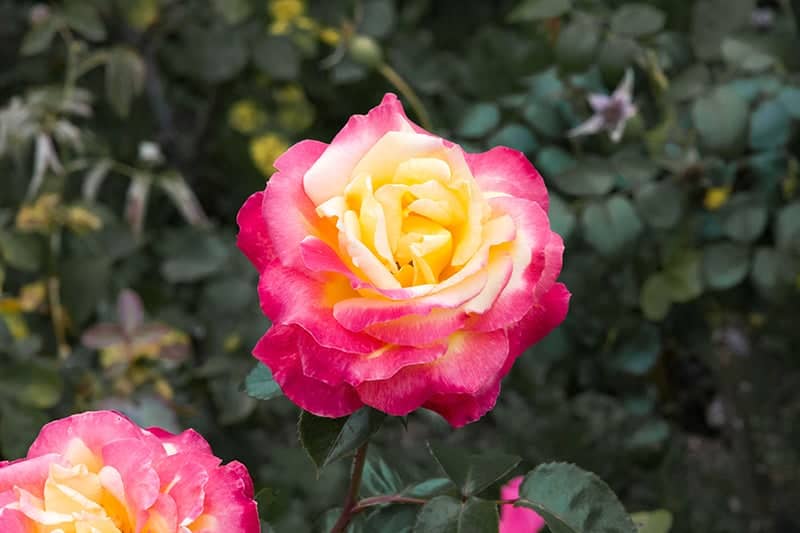
With their layered flowers, soft petals in tender, warm hues, and adorned by precious fragrance, cultivated roses are undoubtedly magnificent flowers and all-time favorites of many.
If something can up their game, it would be a rose in two color tones. Is it possible that something like that exists? The answer is “Yes”, and it is called a bicolor or variegated rose. There are dozens of varieties in almost all rose color combinations.
The care of a bicolor rose doesn’t differ from any other cultivated rose. They should be watered (but not over-watered!) until established, fertilized with high-quality compost or other slow-releasing fertilizer once or twice in the season (before flowering) and pruned once a year for best results – some say spring is a better time for pruning than autumn.
14. Japanese Cherry Blossom
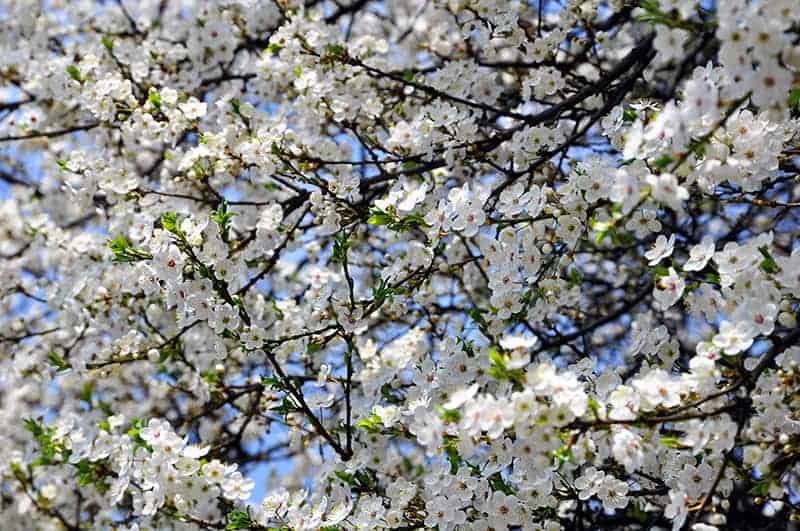
The lovely Sakura tree, as it is known in Japan, is cherished and celebrated every spring during their two-week blooming time. The species behind this flower spectacle is the Japanese cherry, Prunus serrulata.
Like other decorative trees of the genus, the Japanese cherry tree is generally undemanding. In order to ensure the best blooming and fragrance possible, plant it in a sunny spot.
The trunks and canopies of this fruit tree also have a high decorative value. Because of their sweet sap, they are alluring to insects of all kinds, from aphids to weevils to ants, so you should keep an eye on that.
If you can’t find Prunus serrulata specifically, P. cerasifera – Cherry plum can give you practically the same blooming spectacle. Go for a red leaf variety for a year-round beauty effect.
15. Lilac (Syringa vulgaris)
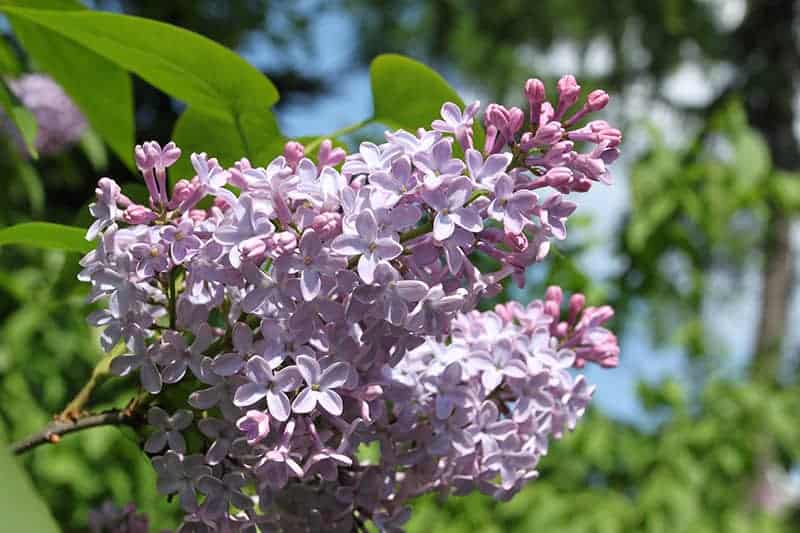
Lilac is a small tree with dazzlingly fragrant clusters of small, voluminous flowers that are normally violet but can also come in white and variegated forms. The plant is native to the Balkans of Southeastern Europe but has been naturalized in other parts of Europe and North America.
Lilac flowers in May and it’s fragrance is one of the signatures of the spring in full swing.
It is not demanding when it comes to soil – or anything else in fact. It does best in partial shade with regular sunny intervals.
To Take Away
All flowers are amazing in their own respect, so the list of the world’s most beautiful garden flowers always really hard to curate.
I have to warn you that choosing the flowers you actually want to plant in your garden could be even more difficult! When looking at all the amazing forms, shapes and colors it is really hard to choose only a limited number.
There are some natural limitations that will help you narrow down your choices.
First and foremost, always pay attention to zones and the general needs of your favorite flowers. Beautiful plants can be an ugly disappointment if you try to force it and grow them out of their comfort (and hardiness) zone.
Whatever your choice may be, remember to always enjoy the celebration of nature that flowers represent.
Related Content
-
All about Spider Mites and How to Get Rid of Them
-
20 Cool & Thoughtful Gifts For Gardeners
window.adthrive.cmd.push(function() { window.adthrive.disableAds(); }); ... Read More
-
Top 8 Most Reliable & Best Dandelion Killers – Get These Weeds Off Your Garden & Lawn
Removing dandelions can be a difficult process. They are known to grown lo... Read More
-
What is Perlite? What is its use in the garden?
Have you ever used a bag of commercial potting soil? If so, you may have n... Read More
